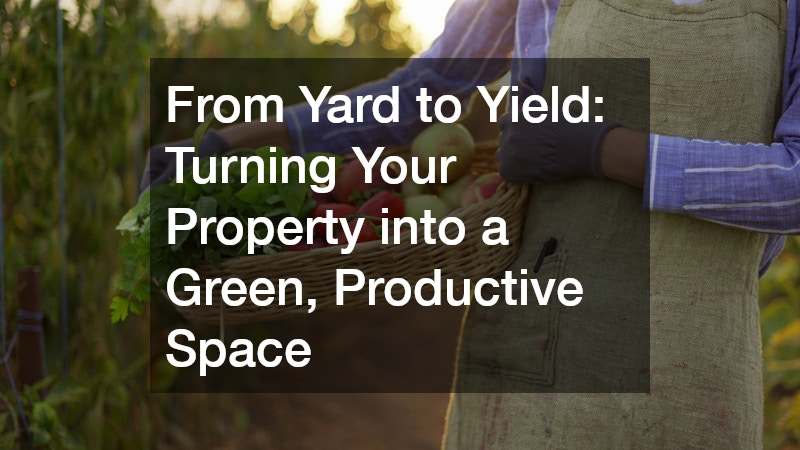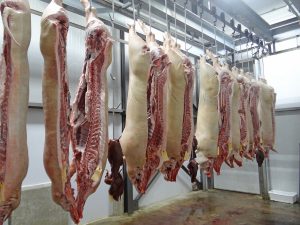There’s something profoundly satisfying about transforming a simple patch of land into a thriving, sustainable environment. The modern homeowner isn’t just planting flowers or trimming hedges anymore; they’re cultivating ecosystems. Across suburbs and cities alike, people are turning ordinary backyards into productive spaces that grow food, save water, and support wildlife—all while reducing costs and dependence on external systems. This shift toward self-sufficiency is more than a trend; it’s a response to rising environmental challenges, higher living expenses, and the growing need for personal resilience. It reflects a deeper awareness that sustainability begins at home, with each small decision—from the plants we choose to the energy we conserve—contributing to a healthier planet and a more balanced way of living.
Whether you’re working with an acre of land or a compact urban lot, you can make it greener and more efficient. The key lies in understanding how your property’s resources—sunlight, soil, water, and waste—interact. From design and energy to waste management and community involvement, each part of your property can play a role in building a more sustainable lifestyle. What follows is a practical and deeply detailed exploration of how to create that transformation—turning your home landscape into something that truly gives back.
- Designing an Eco-Friendly Foundation for Growth
- Building a Self-Sufficient System for Power and Resources
- Reducing Waste and Closing the Sustainability Loop
- Protecting What You Grow Naturally and Responsibly
- Strengthening Your Storage and Sustainability Infrastructure
- Building Community and Expanding Your Impact
- Maintaining and Improving Your Green Ecosystem
- From Hobby to Legacy: Scaling Your Efforts Sustainably
Designing an Eco-Friendly Foundation for Growth
A well-thought-out backyard is more than a beautiful view; it’s a system that balances aesthetics, function, and sustainability. Smart backyard design begins with observation. Pay attention to where sunlight falls throughout the day, where rainwater tends to collect, and how wind moves across your property. These patterns determine where your vegetable beds, fruit trees, and relaxation zones will thrive. By grouping plants with similar water and light needs, you conserve energy and minimize waste.
Another critical element of sustainable landscaping is the use of native species. Native plants require less water, fewer fertilizers, and minimal maintenance. They also support pollinators like bees and butterflies that are essential for food crops. The goal isn’t to build a perfect garden overnight but to establish a layout that supports gradual, lasting productivity.
Trees play a crucial role in this ecosystem. They provide shade that reduces indoor cooling costs, shelter for birds, and roots that prevent soil erosion. Regular maintenance through a professional tree service ensures that your trees stay healthy and safe. Well-timed pruning, disease treatment, and storm damage prevention can mean the difference between a thriving canopy and a hazardous one. Over time, these trees will become not just decorative but functional—acting as carbon absorbers, fruit providers, and windbreaks that protect your garden’s delicate balance.
Building a Self-Sufficient System for Power and Resources
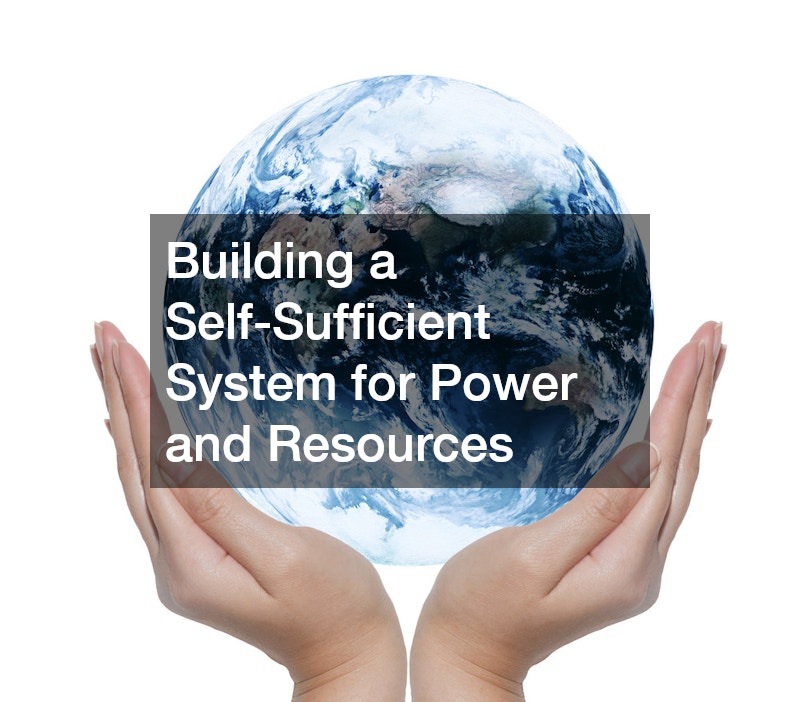
Every sustainable property benefits from dependable and efficient power sources. Renewable energy systems like solar panels are ideal, but even small households can start with incremental upgrades. If you already own backup power equipment, an electric generator rebuild can be a game changer. Instead of discarding an aging unit, rebuilding it extends its life and reduces environmental waste. It’s a practical example of sustainability that conserves both money and materials. Integrating the rebuilt generator with solar arrays or small wind turbines creates a resilient power network that keeps essential systems—like irrigation pumps and refrigeration—running even during outages.
When you begin thinking about power as part of an integrated system rather than an isolated function, opportunities for savings multiply. For example, homeowners can pair renewable energy with battery storage to capture excess electricity during sunny or windy periods and use it later at night or during power interruptions. Adding energy-efficient appliances and LED lighting further reduces strain on your generator and overall consumption. The real secret is balance—understanding how each part of your energy setup complements the others. Even modest improvements like upgrading wiring or insulating outdoor power enclosures can increase efficiency and reliability.
Water management is equally critical. Many homeowners overlook the value of a water conditioner, but this simple device can significantly enhance a property’s efficiency. Conditioned water helps protect irrigation equipment, prevent scale buildup, and promote healthier plant growth by improving soil absorption. Combining it with rainwater harvesting barrels or greywater reuse systems maximizes every drop of water. You might also consider installing drip irrigation systems, which deliver water directly to plant roots and reduce evaporation. Over time, these systems pay for themselves through lower utility bills and stronger crop yields. A sustainable home isn’t just one that generates its own energy; it’s one that uses natural resources wisely and conservatively. Together, clean power and clean water form the foundation for any productive and eco-friendly landscape.
Reducing Waste and Closing the Sustainability Loop
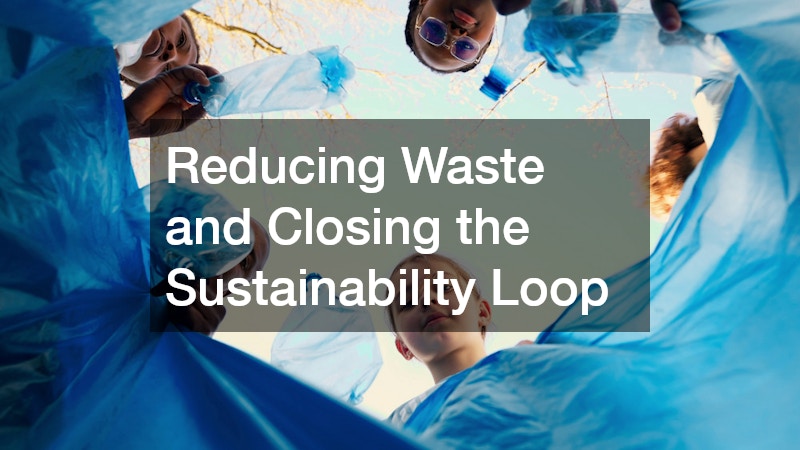
Sustainability is about cycles—nothing truly goes to waste if you design the right systems. That’s where recycling services come into play. Most communities now offer extensive recycling options, yet many households still underutilize them. Understanding what materials are accepted, how to prepare them, and how to avoid contamination can greatly improve recycling efficiency. Setting up clearly labeled bins for paper, glass, metal, and compostable materials streamlines the process and encourages participation from everyone in the household.
For properties that produce larger volumes of recyclable or organic waste, commercial recycling equipment services provide valuable support. They can handle bulk yard debris, broken concrete, or even large metal items that standard recycling programs won’t accept. Instead of sending these materials to landfills, they’re repurposed into useful products like mulch, aggregate, or new building components. Closing the waste loop in this way not only reduces landfill burden but also supports local green businesses. The result is a cleaner property, a healthier planet, and a mindset that views waste not as an inconvenience, but as a resource waiting to be reused.
Protecting What You Grow Naturally and Responsibly
Building a lush and productive property is only half the battle—protecting it is where true sustainability is tested. Many homeowners struggle with garden pests and diseases, often resorting to chemical sprays that damage the environment. Instead, working with eco-conscious pest control companies that specialize in integrated pest management offers a safer and smarter alternative. These professionals focus on prevention, monitoring, and targeted treatment rather than blanket pesticide use. They might introduce beneficial insects, use organic deterrents, or recommend cultural practices that disrupt pest lifecycles.
Even with careful management, nature can be unpredictable. Severe weather, drought, and infestations can devastate a growing operation. That’s why crop insurance isn’t just for large-scale farmers anymore. Some programs now extend to small farms and homesteads, offering protection for produce, livestock, and other agricultural investments. This kind of security encourages long-term planning and experimentation without the fear of total loss. Sustainability, after all, isn’t just about what you grow—it’s about how you safeguard your efforts against unexpected challenges. By blending biological control with practical financial planning, you create a truly resilient growing system.
Strengthening Your Storage and Sustainability Infrastructure
Once your property begins producing consistently, proper storage becomes essential. Many small-scale growers underestimate how much post-harvest management affects sustainability. Investing in durable grain bin equipment ensures that your grains, seeds, or feed stay dry, pest-free, and ready for use or sale. Moisture control is especially important because spoiled storage can undo months of work in a single week. Modern grain bins come with ventilation systems and temperature monitoring that keep stored products stable while minimizing energy consumption.
Reliable power remains equally important for maintaining storage systems and operating essential tools. Returning to the earlier theme of energy efficiency, an electric generator rebuild supports long-term sustainability by minimizing electronic waste. Instead of purchasing a brand-new generator, a rebuild restores existing machinery with upgraded components and better fuel performance. This reduces the carbon footprint while keeping your property operational in all conditions. When energy, storage, and efficiency align, your property becomes not just productive—but self-reliant.
Building Community and Expanding Your Impact

Sustainability flourishes when shared. The most successful green properties often extend their reach beyond their fences, engaging neighbors and local organizations. Hosting a charity fundraiser centered around environmental initiatives is one meaningful way to contribute. Whether it’s a tree-planting drive, a neighborhood garden build, or a cleanup event, these gatherings unite communities around shared values. They also raise awareness and funds for eco-focused projects that benefit everyone.
Collaboration with local recycling services can amplify these efforts. Organizing collection drives for plastics, electronics, or hazardous materials keeps pollutants out of landfills and educates the community about proper disposal. Many recycling companies even offer sponsorship or logistical support for such events, helping residents feel directly involved in sustainability. By building relationships with these local partners, you transform sustainability from a personal pursuit into a collective movement. The sense of shared responsibility that emerges reinforces environmental habits and strengthens community bonds.
Maintaining and Improving Your Green Ecosystem
A sustainable property is a living system, constantly evolving and requiring attention throughout the year. Regular upkeep ensures that it continues to thrive. Seasonal assessments by a tree service help identify potential risks such as weak branches, pest infestations, or nutrient deficiencies before they escalate. This kind of preventive care supports long-term growth and prevents costly damage. Trees are long-term investments, and maintaining their health keeps your entire ecosystem stable.
Simultaneously, a relationship with responsible pest control companies keeps your plants, animals, and home safe. The best providers use integrated methods that preserve beneficial insects while managing harmful ones. They also educate property owners on natural deterrents and landscape adjustments that reduce pest breeding areas. Beyond maintenance, successful sustainability depends on observation. Tracking soil health, water usage, and biodiversity indicators can reveal subtle shifts in your ecosystem. With this knowledge, you can adapt—adjusting crop rotation, compost input, or irrigation methods to keep your system balanced and productive year after year. Maintaining detailed seasonal notes about rainfall, pest patterns, and yield outcomes creates a valuable record for long-term decision-making. Over time, these insights help refine your approach to planting, improve soil fertility naturally, and strengthen your land’s ability to recover from environmental stress. Sustainability isn’t static—it’s a living, evolving relationship with your property that deepens with every season and every mindful choice.
From Hobby to Legacy: Scaling Your Efforts Sustainably
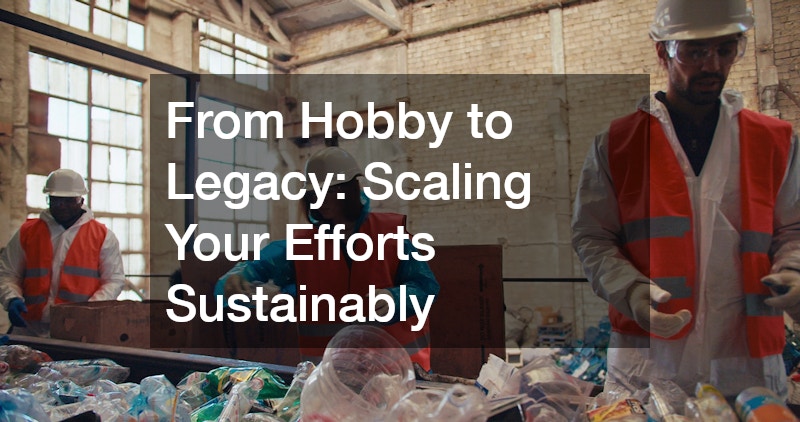
What begins as a personal project can easily grow into something much bigger. Many homeowners find that their passion for sustainability evolves into a source of income or community impact. Selling surplus produce, seeds, or home-crafted goods is one natural next step. For those expanding their operations, investing in quality grain bin equipment becomes even more essential for managing larger yields and ensuring food safety. Efficient storage allows you to keep goods longer and distribute them more effectively to local markets or co-ops.
As your property grows more productive, protecting your investment becomes paramount. Here again, crop insurance plays a valuable role. Expanding into small-scale farming or agribusiness introduces more variables—weather fluctuations, equipment failures, or even theft. Insurance coverage ensures that your hard-earned progress isn’t undone by one unlucky season. More than just a financial tool, it’s a cornerstone of sustainable growth, encouraging calculated risks that push your productivity and innovation forward.
Ultimately, scaling your efforts sustainably means thinking beyond yourself. You’re not just producing for profit but for preservation—creating a model that future generations can build upon. Whether you pass down the property to family or share your knowledge with community groups, your commitment leaves a lasting legacy of stewardship and resilience.
Transforming your yard into a productive, sustainable space is both a personal and planetary act of responsibility. Every tree planted, every gallon of water saved, and every scrap of waste repurposed contributes to a global network of individuals working toward balance. The process takes time, patience, and adaptability, but the rewards are immense—lower costs, healthier living, and the quiet satisfaction of knowing your land gives back as much as it receives.
Sustainability isn’t about perfection; it’s about intention. Each improvement, no matter how small, adds up to a significant impact over time. Whether you’re managing a modest garden or a growing homestead, the principles remain the same: respect the cycles of nature, use resources wisely, and share what you learn with others. In doing so, you transform your property into more than a piece of land—you turn it into a living example of what’s possible when people and the planet grow together.
